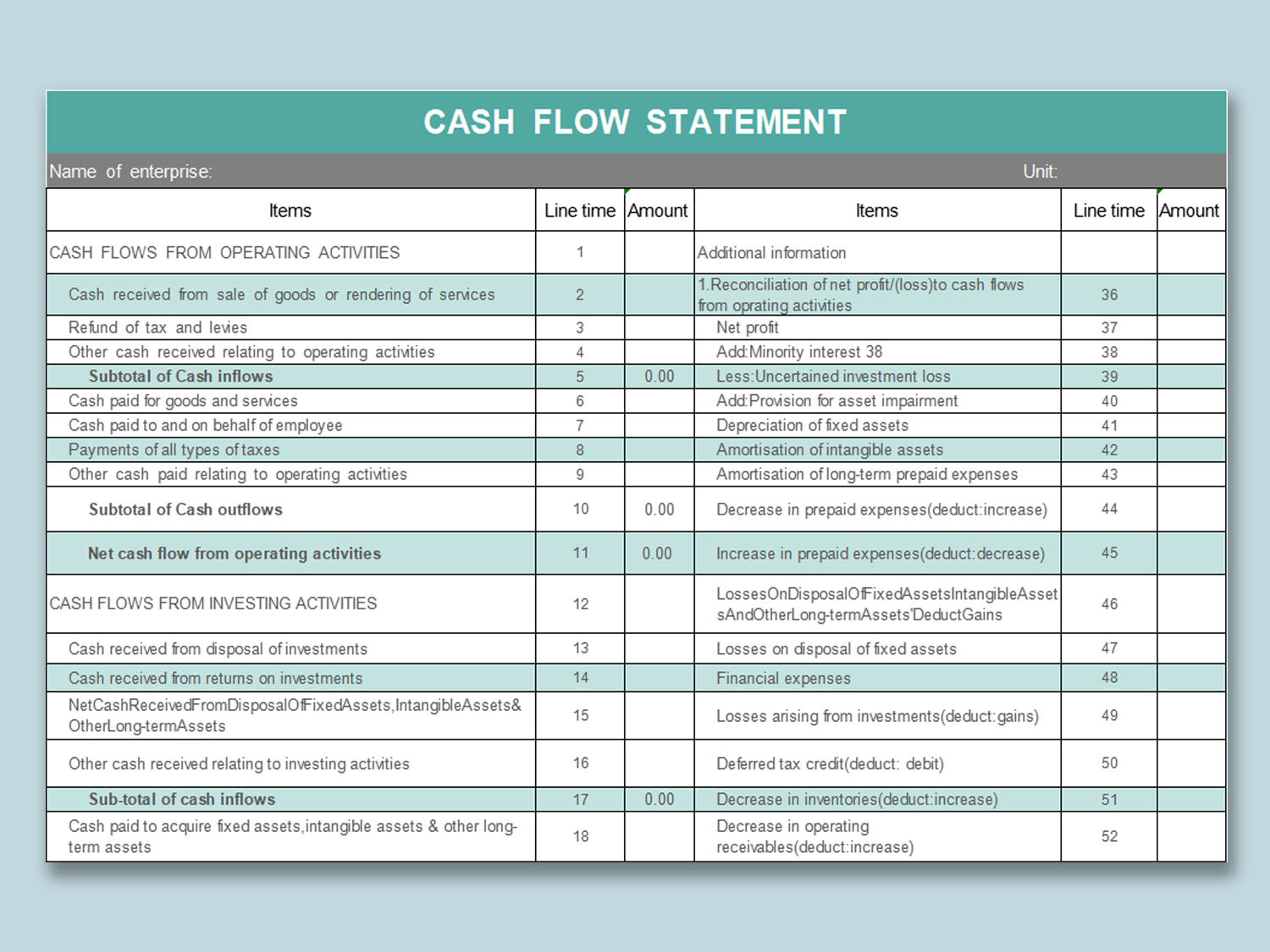Home>Finance>How Do Big Companies Use Their Revolving Credit Lines With Banks?


Finance
How Do Big Companies Use Their Revolving Credit Lines With Banks?
Published: February 29, 2024
Discover how big companies leverage their revolving credit lines with banks to manage their finances and optimize their cash flow. Learn about the strategic use of finance in corporate operations.
(Many of the links in this article redirect to a specific reviewed product. Your purchase of these products through affiliate links helps to generate commission for LiveWell, at no extra cost. Learn more)
Table of Contents
**
Introduction
**
Big companies often require substantial financial resources to support their operations, expansion, and strategic initiatives. In the realm of corporate finance, revolving credit lines play a crucial role in providing these organizations with flexible access to capital. Understanding how big companies utilize revolving credit lines with banks is essential for gaining insights into their financial strategies and the mechanisms supporting their growth.
Revolving credit lines serve as a source of short-term financing that enables companies to borrow funds as needed, up to a predetermined credit limit. Unlike traditional term loans, revolving credit lines offer the advantage of flexibility, allowing borrowers to access funds, repay them, and re-borrow as necessary within the specified terms. This financial tool provides big companies with the agility to manage their working capital, seize growth opportunities, and navigate through fluctuations in cash flow.
As we delve into the dynamics of revolving credit lines and their utilization by big companies, it becomes evident that these financial instruments are pivotal in shaping corporate financial strategies. By exploring the benefits, utilization patterns, influencing factors, and associated risks, we can gain a comprehensive understanding of how big companies leverage revolving credit lines to fuel their growth and sustain their operations.
Understanding Revolving Credit Lines
Revolving credit lines are a form of financing that provides borrowers with the flexibility to access funds as needed, up to a predetermined credit limit. Unlike term loans, which involve borrowing a lump sum that is repaid over a specified period, revolving credit lines allow borrowers to withdraw funds, repay them, and borrow again within the agreed terms. This revolving nature of the credit line offers companies the agility to manage their short-term financial needs effectively.
One of the key features of revolving credit lines is their renewable nature. As the borrowed funds are repaid, they become available for borrowing again, providing a continuous source of capital for companies. This flexibility is particularly advantageous for big companies, as it enables them to address working capital requirements, seize growth opportunities, and navigate through periods of fluctuating cash flow.
Interest is typically charged on the outstanding balance of the revolving credit line, and the terms of repayment vary based on the agreement between the borrowing company and the lending institution. Additionally, revolving credit lines may be secured or unsecured, with secured credit lines requiring collateral to mitigate the lender’s risk.
Furthermore, revolving credit lines can be utilized for various purposes, including financing day-to-day operations, managing inventory, covering short-term expenses, and capitalizing on strategic investments. The flexibility and accessibility offered by revolving credit lines make them a valuable financial tool for big companies seeking to optimize their liquidity and maintain financial agility.
Benefits of Revolving Credit Lines for Big Companies
Revolving credit lines offer several key benefits for big companies, making them a valuable financial resource in the corporate landscape. These benefits include:
- Flexibility: Revolving credit lines provide big companies with the flexibility to access funds as needed, allowing them to address short-term financial requirements and capitalize on strategic opportunities without being bound by rigid repayment schedules.
- Working Capital Management: Big companies can use revolving credit lines to effectively manage their working capital, ensuring they have the necessary funds to support day-to-day operations, inventory management, and other short-term financial needs.
- Liquidity Optimization: By maintaining a revolving credit line, big companies can optimize their liquidity, ensuring they have access to capital when necessary without relying solely on cash reserves or long-term financing.
- Financial Agility: Revolving credit lines enable big companies to adapt to changing market conditions and capitalize on time-sensitive opportunities, supporting their agility in navigating dynamic business environments.
- Interest Cost Management: Companies can use revolving credit lines strategically to manage their interest costs, as they only incur interest on the funds they have borrowed and outstanding, providing greater control over financial expenses.
These benefits collectively contribute to the financial resilience and operational flexibility of big companies, empowering them to optimize their capital structure and respond effectively to evolving market dynamics and business needs.
How Big Companies Utilize Revolving Credit Lines
Big companies employ revolving credit lines in various strategic and operational capacities, leveraging these financial instruments to support their growth and navigate the complexities of the business landscape. The utilization of revolving credit lines by big companies encompasses several key aspects:
- Working Capital Management: One of the primary uses of revolving credit lines by big companies is to manage their working capital effectively. This includes addressing short-term cash flow needs, funding operational expenses, and optimizing liquidity to sustain day-to-day business operations.
- Strategic Investments: Big companies utilize revolving credit lines to capitalize on strategic investments, such as mergers and acquisitions, expansion initiatives, and capital expenditures. By accessing flexible financing, these companies can pursue growth opportunities and enhance their market position.
- Seasonal Fluctuations: In industries characterized by seasonal demand fluctuations, big companies rely on revolving credit lines to navigate through periods of reduced cash flow, ensuring they have the necessary resources to manage inventory, meet obligations, and capitalize on peak seasons.
- Opportunistic Expansion: Revolving credit lines enable big companies to seize time-sensitive expansion opportunities, such as entering new markets, launching product lines, or scaling operations, without being constrained by the limitations of traditional term loans.
- Risk Mitigation: Big companies may use revolving credit lines as a risk management tool, providing a financial buffer to mitigate unforeseen challenges, economic downturns, or disruptions in their industry, thus enhancing their resilience and stability.
By strategically leveraging revolving credit lines, big companies can optimize their capital allocation, enhance their financial flexibility, and capitalize on growth prospects while effectively managing short-term financial needs and market dynamics.
Factors Influencing the Use of Revolving Credit Lines
Several key factors influence the utilization of revolving credit lines by big companies, shaping their strategic decisions and financial management. These factors play a pivotal role in determining how companies leverage revolving credit lines to support their operations and growth initiatives:
- Market Conditions: The prevailing market environment, including interest rates, economic outlook, and industry dynamics, significantly influences the use of revolving credit lines by big companies. Favorable market conditions may encourage companies to utilize these credit lines for expansion and investment, while challenging conditions may prompt them to rely on revolving credit for working capital and risk mitigation.
- Business Cycles: The stage of the business cycle, whether in a growth phase, recession, or recovery, impacts how big companies utilize revolving credit lines. During periods of expansion, companies may leverage these credit lines to fund strategic initiatives, while in downturns, the focus may shift towards managing liquidity and sustaining operations.
- Capital Structure Objectives: Big companies’ capital structure objectives, including debt-to-equity ratios, cost of capital considerations, and financial leverage targets, influence their use of revolving credit lines. These objectives guide the strategic allocation of funds and the balance between short-term and long-term financing.
- Competitive Landscape: The competitive dynamics within industries can drive the utilization of revolving credit lines, as companies seek to maintain financial agility, capitalize on growth opportunities, and respond to competitive pressures. Access to flexible financing can be a strategic advantage in highly competitive markets.
- Strategic Initiatives: Big companies’ strategic plans, such as expansion into new markets, product diversification, or acquisition strategies, influence the use of revolving credit lines. These initiatives often require flexible financing to support their execution and mitigate the associated financial risks.
By considering these influential factors, big companies can align their use of revolving credit lines with their broader financial strategies, operational objectives, and the prevailing market conditions, thus optimizing their capital management and sustaining their competitive edge.
Risks Associated with Revolving Credit Lines
While revolving credit lines offer significant benefits, they also entail certain risks for big companies, necessitating careful financial management and risk mitigation strategies. The following are key risks associated with the utilization of revolving credit lines:
- Interest Rate Risk: Fluctuations in interest rates can impact the cost of borrowing through revolving credit lines, potentially leading to increased interest expenses for companies. Big companies are exposed to interest rate risk, particularly in environments characterized by volatile or rising interest rates.
- Overreliance on Short-Term Debt: Depending excessively on revolving credit lines for long-term financing needs can expose companies to refinancing risk and potential challenges in managing their debt maturity profiles. Overreliance on short-term debt may lead to liquidity pressures during periods of economic instability.
- Credit Limit Constraints: The credit limits established for revolving credit lines may pose limitations on the amount of capital available to big companies, potentially constraining their ability to pursue large-scale strategic initiatives or respond to unexpected financial demands.
- Collateral Requirements: Secured revolving credit lines often necessitate the provision of collateral by big companies, exposing them to asset-based risks. In the event of default, the lender may claim the collateral, impacting the company’s financial position and operational capabilities.
- Repayment Obligations: Revolving credit lines require disciplined repayment schedules, and companies must manage their cash flow effectively to meet these obligations. Failure to adhere to repayment terms can lead to increased interest costs and strained relationships with lenders.
Addressing these risks involves proactive financial planning, effective liquidity management, and a thorough understanding of the company’s financial obligations and capabilities. Big companies must assess the trade-offs associated with revolving credit lines and implement risk mitigation strategies to safeguard their financial stability and operational resilience.
Conclusion
Revolving credit lines represent a vital financial tool for big companies, offering flexibility, liquidity, and strategic support for their operational and growth endeavors. These credit lines enable companies to manage working capital, pursue strategic investments, and navigate through dynamic market conditions, providing a valuable source of short-term financing.
By understanding the benefits, utilization patterns, influencing factors, and associated risks of revolving credit lines, big companies can optimize their financial strategies and enhance their resilience in the face of evolving business landscapes. The flexibility inherent in revolving credit lines empowers companies to adapt to changing market dynamics, capitalize on growth opportunities, and effectively manage their short-term financial needs.
However, it is essential for big companies to approach the use of revolving credit lines with a comprehensive understanding of the associated risks and the need for proactive risk management. By carefully assessing market conditions, aligning their capital structure objectives, and implementing prudent financial planning, companies can leverage revolving credit lines to their advantage while mitigating potential drawbacks.
Ultimately, the strategic utilization of revolving credit lines by big companies requires a balanced approach that considers the interplay of market dynamics, competitive landscapes, and internal financial objectives. By doing so, companies can harness the benefits of revolving credit lines to fuel their growth, optimize their capital structure, and sustain their operational agility in a dynamic and competitive business environment.














